- VMware
- 27 May 2022 at 11:35 UTC
-

- 1/2
When you install VMware ESXI on a professional server, whose brand and model are referenced in the VMware Compatibility Guide, everything is fine.
However, when you install VMware ESXi on a home server or a high-performance computer with hardware primarily intended for home use, it may not work.
For example, depending on the version of VMware ESXi you will attempt to install, your network adapter (integrated into your motherboard or not) may not yet be natively supported.
- No network adapter detected
- Find the model of your network adapter
- Find precise information from a Linux live CD
- Download the driver for your network adapter from VMware
- Add the network driver in the ISO of VMware ESXi 6.5.0
- Install VMware ESXi 6.5.0 with custom ISO file
- Verifying the installation of VMware ESXi 6.5.0
1. No network adapter detected
In our case, we bought a very powerful computer to test different things and mainly different virtualization solutions, including VMware ESXi.
We therefore don't have the possibility of buying a server compatible with all the virtualization solutions that we want you to discover on InformatiWeb Pro.
In short, in our tests, we tried to use an old version of VMware ESXI to try to solve a specific problem.
In this case, it was version 6.5.0 of VMware ESXi (as you can see on the image below).
We tried to boot from the VMware ESXi 6.5.0 installation CD and this loading screen appeared.

Except that a "No Network Adapters" error appeared before the VMware ESXi 6.5.0 installer could appear.
As explained in this error message, either there is no network adapter in your computer or server, or a suitable driver could not be loaded to be able to detect it.
Plain Text
No network adapters were detected. Either no network adapters are physically connected to the system, or a suitable driver could not be located. A third party driver may be required. Ensure that there is at least one network adapter physically connected to the system before attempting installation. If the problem persists, consult the VMware Knowledge Base.

2. Find the model of your network adapter
Dans notre cas, nous possédons une carte mère Asus WS X299 SAGE/10G qui contient notamment 2 ports 10 Gigabit.
Pour trouver le modèle de cette carte réseau Ethernet (LAN) intégrée à cette carte mère, nous avons du aller sur le site officiel de notre carte mère : Asus WS X299 SAGE/10G.
Comme vous pouvez le voir via l'impression d'écran ci-dessous, Asus nous indique qu'il s'agit d'une carte réseau Intel 10G LAN X550-AT2.
In our case, we have an Asus WS X299 SAGE/10G motherboard which contains 2 "10 Gigabit" ports.
To find the model of this Ethernet network adapter (LAN) integrated in this motherboard, we had to go to the official website of our "Asus WS X299 SAGE/10G" motherboard.
As you can see on the screenshot below, Asus tells us that this is an Intel 10G LAN X550-AT2 network adapter.

If we go to the "Specifications" section of this page, we find the same information : Intel X550-AT2.

Then, we found the "Intel® Ethernet Adapters Compatibility with VMware" page of the official Intel website.

On this page, Intel tells us that the "ixgbe" driver from VMware allows us to support Intel Ethernet X550 network adapters in particular.
Which already allows us to have a good information.

3. Find precise information from a Linux live CD
That said, to quickly and precisely find the model of your network adapter and thus be able to easily find the appropriate driver from VMware, the easiest way is to boot on a Linux Live CD.
Indeed, these allow you to start a computer on a Linux operating system without having to install it and since VMware ESXi is based on Linux, this will allow you to directly find the information necessary to find the appropriate driver.
Indeed, as you will be able to see it a little further, the model indicated by Asus is not quite the same one as that detected on Linux.
In short, in our case, we used the Ubuntu 20.04.3 LTS CD.
Once you have booted from this Live CD, select "English" and click on : Try Ubuntu.

Change the keyboard layout if necessary to make it easier to type the commands you'll find later in this tutorial.

Open a terminal and type the command :
Bash
lspci | grep -i eth
The "lspci" command allows you to quickly list all the PCI devices available on your computer or server, but we will only show network adapters here using the "grep" command as well.
Which gives in our case :
Plain Text
b3:00.0 Ethernet controller: Intel Corporation Ethernet Controller 10G X550T (rev 01) b3:00.1 Ethernet controller: Intel Corporation Ethernet Controller 10G X550T (rev 01)
This is normal given that this is an integrated LAN network card with 2 "10 Gigabit" Ethernet ports.
As you can see, Ubuntu tells us that the brand / model of our network adapter is : Intel Corporation Ethernet Controller 10G X550T.

Another way to get the brand and model of your network adapter is to use the "lshw" command, displaying only the network section.
However, this requires "root" rights.
Note that if you are using an Ubuntu Live CD in "Try Ubuntu" mode, then the password for the "root" account is empty.
If Ubuntu asks you to, just press Enter.
Bash
sudo lshw -c network
Which will display in particular this in our case :
Plain Text
*-network:0
description: Ethernet interface
product: Ethernet Controller 10G X550T
...
This command tells us again that the brand of our network adapter is "Intel Corporation" and its model is "X550T".
However, this command also displays the name of the appropriate Linux driver for this network adapter, as well as the version used in this case.
But, its version doesn't really matter in our case.

If you want to get all the information at once, the command to use is :
Bash
inxi -N -v 6
However, it may not be installed by default.
Plain Text
inxi : command not found
Here is how to install it on Ubuntu 20.04.3 LTS.
To start, act as "root" using the command below.
Note : if you are using "Try Ubuntu" mode, but Ubuntu asks you for a password.
Leave blank and press Enter.
Bash
sudo su
Then, add the "universe" repository.
Bash
add-apt-repository universe
Update the list of available packages.
Bash
apt-get update
Then, install the "inxi" package.
Bash
apt-get install inxi
Now, run the "inxi" command like this :
Bash
inxi -N -v 6
As you can see, this command displays a lot of information about your components : information about the Linux operating system used, motherboard, RAM modules, ...
Note that the verbosity level of "6" (-v 6) is required for the desired information to appear for your network adapter.

In the "Network" section, you will find :
- Device-x : network adapter brand and model.
- driver : name of the appropriate driver used on Linux for this network adapter
- chip ID : Vendor Identifier (VID) and Device Identifier (DID).
In the event that VMware shows you the same network adapter multiple times in its search results, these hardware IDs will allow you to choose the correct search result.
Plain Text
...
Network: Device-1: Intel Ethernet 10G X550T vendor: ASUSTeK driver: ixgbe v: kernel port: a000 bus ID: b3:00.0
chip ID: 8086:1563
IF: enp179s0f0 state: up speed: 10000 Mbps duplex: full mac: d4:5d:64:xx:xx:xx
Device-2: Intel Ethernet 10G X550T vendor: ASUSTeK driver: ixgbe v: kernel port: a000 bus ID: b3:00.1
chip ID: 8086:1563
IF: enp179s0f1 state: down mac: d4:5d:64:xx:xx:xx
...

4. Download the driver for your network adapter from VMware
Now that you have all the necessary information about your network adapter, go to the VMware "VMware Compatibility Guide" compatibility matrix and select "IO Devices" in the gray bar (if necessary).
Then, select :
- Product Release Version : your version of VMware ESXi. In our case : ESXi 6.5.
- Brand Name : the brand of your network adapter. In our case : Intel.
- Keyword : the model of your network card. In our case, we indicated "X550", but we could have indicated "X550T".

As you can see, the VMware site shows us 5 results.
Since Ubuntu told us that it was precisely the "Intel Ethernet 10G X550T" model, we know that this is the 1st or 2nd result.

To differentiate them, hover over their names and you will see identifiers appear :
- VID : Vendor ID
- DID : Device ID
- SVID : Sub Vendor ID
- SSID : Service Set ID
Thanks to the command "inxi" mentioned above, we know the value of the VID and DID : "chip ID: 8086:1563".
In our case, we can therefore know that this is the 2nd result.

A page appears and tells us that there are 2 ports on this network adapter (Number of Port : 2).
Which corresponds to reality.

Find the most recent version of the proposed driver in the list.
Once you have found it, click on the small "+" located on the left of the desired line.

Then, click on the download link that appears.

In our case, a download page for the "ixgbe 4.5.3" driver appears.
As we can see from the download information, this network driver is indeed compatible with Intel X550 network adapters.

Note that downloading drivers from VMware requires that you are logged in to your VMware account.
If you don't have one yet, create one for free and use this one.

Now, the "Download Now" button works and the download will start.

Share this tutorial
To see also
-
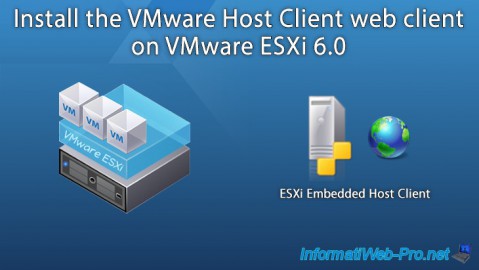
VMware 5/25/2022
VMware ESXi 6.0 - Install the VMware Host Client web client
-
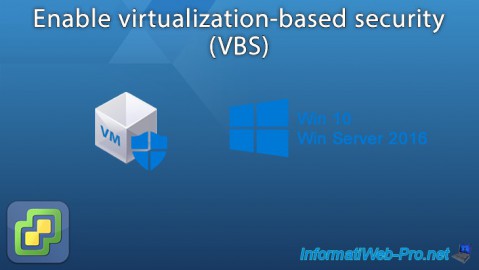
VMware 1/27/2023
VMware ESXi 6.7 - Enable virtualization-based security (VBS)
-
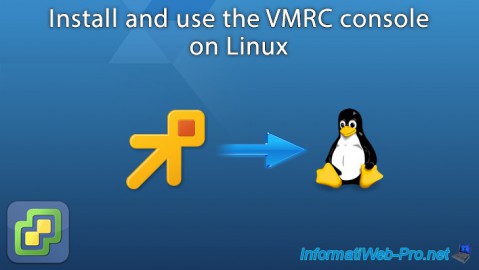
VMware 12/2/2022
VMware ESXi 6.7 - Install and use the VMRC console on Linux
-
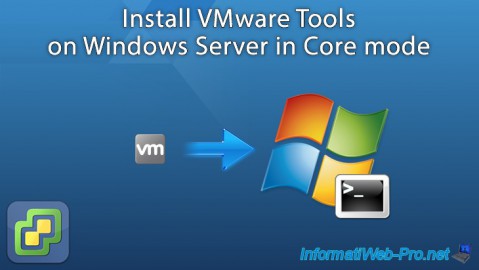
VMware 12/30/2022
VMware ESXi 6.7 - Install VMware Tools on Win Server in Core mode

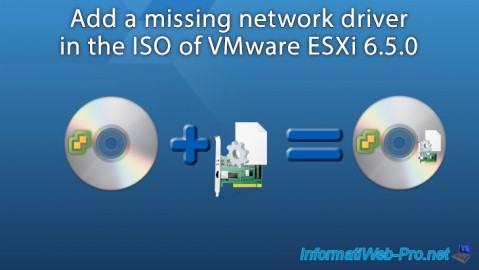
You must be logged in to post a comment